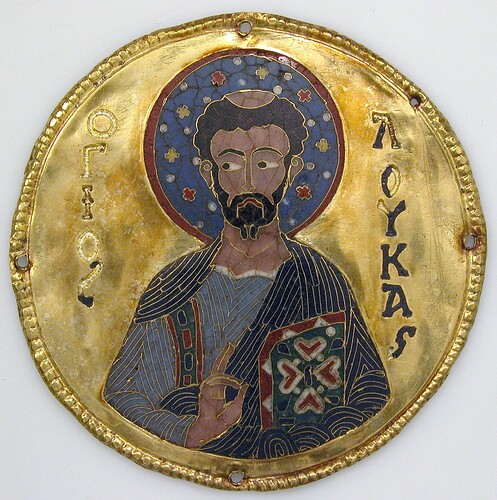Thank you for your reply. Looking forward the new book.
Counting the minutes for the pleasure of reading it, like everything that you write.
Sorry, late to the party. @ShadowNet would you talk more about this toroidal field? Do you mean the aura, or something else? When you see this toroidal field, what type of person are you looking at? Would be grateful for a fairly comprehensive answer for research I feel driven to do on something pretty far out there. Search engines are useless. Have to rely on finding snippets wherever I encounter them. Thanks.
If you search the keywords
toroidal field sheldrake
and change to images you get lots of examples.
Thanks. And so you see this around everyone, or just around some people?
It varies a lot by the person what is visible.
Their answer to this question at this site is innacurate, ring and disc halos are different kinds of halos both can be visible but I don’t seem them that often with most people these days they are heavily suppressed.
Plus, a ring around the person’s head is termed an Aureole . The depictions on, for example, icons, are meant to also even convey that these Saints( “godly beings”) actually preternaturally stand out( from the ever-maddening crowds), and that an Halo and/or Aura is a real thing , and that the apperception of such nonmateriality is something to be acknowledged, if not even also reverenced.
This is not to say that auric colours were not, perhaps, commonly seen in past times; note, for example, the frequent references to, say, the dark green of jealousy( hello, Yahweh!) or the dark yellow of cowardice…
This toroidal field, or Donut, is or would be a field that extends from the heart outwards, and quite some distance at that. It is now well accepted that the heart, as it is erroneously called, contains what we call brain cells, that is to say, at least neurons. One might make the case, that if the brain( by “the” brain to mean only the one in the head, as there are others) is, perhaps, a transceiver of Consciousness and influences and flow from Other, then, maybe, the heart is also.
Thus, the nascent activity of the brain may manifest itself in the occult form of an aureole, and so may the activity of the heart, or Mind as it is also known, be registered in the Form of the donut.
There are further forms, such as the vaunted “Dorje”, but this can unneccessarily complicate descriptive matters.
The ancient Egyptians had a handle on how to describe these things, and, for example, the Higher Mental body was depicted sometimes as the Hedjet crown of upper egypt; the higher embodiment of this was then sometimes coloured yellow , rather than white, for The White Crown…
This might be analogous to what in Vedanta( and elsewhere) is known as the Mind Sheath, or simply the mind-shield, the forcefield of Mind( ≈heart).
On the other hand, bear in mind that, the phrase “in my heart of hearts”, while echoed somewhat by Shakespeare, ends up literally as meaning “the core of my heart”…
The gut has intelligence too, can be seen as an energy generator processing food and creating thermal energy obviously that can be seen on thermal cameras.
I have to interject here. The halo in iconography is meant to symbolize the holiness and DEIFICATION that saints experience in the compenetration of the diviine and uncreate energies…
@vardas3
Is that “uncreate energies” a reason why near a saint and with the right intention of the seeker, a saint can heal? Uncreate the bad energies so to speak?
Is black magic the opposite?
Here is an interesting 10th century halo at the MET!
https://www.jstor.org/stable/community.18697177
Saint Luke:
Haven’t heard that term before the Aureole. Sounds kind of similar to Aura, maybe that is similar meaning or different root language don’t know where you heard that one?
Well, there are a lot of terms, and a lot of symbologies that are proper to each hagiography, for example, iconography has its own particularities, and others like occultism, alchemy or hieroglyphic transliteration do have differing ones.
Googling terms such as these can lead one down some interesting “rabbitholes”…
Dr. Farrell brings up an interesting point on the iconographic Halo, which is very specific to that science( sic ). An Halo in other sciences, or philosophical systems, would give different interpretations, though almost always it denotes a( most high) stage of personal development or at least grace.
Yeah, or specifically when they are being portrayed in art to denote someone as being a saint.
I like these medallions would be good to see these at gallery 303:
Medallion with Saint John the Baptist from an Icon Frame
ca. 1100
On view at The Met Fifth Avenue in Gallery 303
These nine medallions are from a group of twelve that once surrounded an icon of the archangel Gabriel. The medallions may have been sent as a gift from the Byzantine court to the neighboring Christian state of Georgia. The three medallions across the top form a Deesis, with Christ between the Virgin and Saint John the Forerunner (the Baptist). Below is the hierarchy of the Church: apostles (Saints Peter and Paul), evangelists (Saints Matthew and Luke), theologians (Saint John the Theologian), and, across the base, military saints (Saint George).


